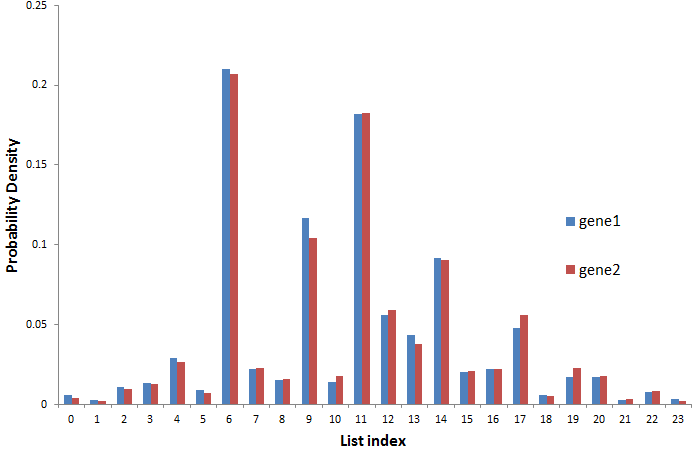I want to compare distributions of reads of a particular length across two different genes and test whether they are statistically different from each other.
For example, if we have the read counts for each category as a list.
gene1 = [140, 280, 122, 544, 681, 1461, 457, 10660, 1133, 770,
5903, 716, 9209, 2828, 2192, 4647, 1027, 1129, 2407,
292, 852, 851, 136, 392]
gene2 = [ 5, 4, 20, 8, 701, 221, 233, 480, 305, 1062, 424, 1023,
474, 1071, 363, 279, 319, 64, 1240, 55, 79, 163, 6, 24]
The list index is the category (read length) and it is corresponding to index in the other list. As you can see, the read count (frequency in each category) can differ greatly between the two genes for each category.
If I apply a chi-square test of independence, it results in a very high chi-square statistic due to huge difference in frequencies of corresponding categories. Also there can be instances where frequency is less than 5. Hence I seriously doubt the validity of applying this test.
I wanted to know if there is any better way to compare these distributions?
I can calculate proportions within each category (to normalize to same scale) but I am not sure how I compare them between the two distributions.
Edit: Why is it problematic?
The distributions of the two sets are very similar but the magnitude of counts are very different where a negligible difference in probability density is a very high difference in actual counts and hence chi-sq is very high leading to significant p-value when I expect it to be insignificant.
View post on imgur.com
